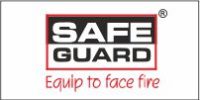 In the highly hazardous environment of offshore oil and gas installations, ensuring the integrity and safety of the equipment is critical to preventing catastrophic failures, especially in the event of fire. Among the many safety devices employed, pressure safety valves (PSVs) play an essential role in maintaining operational safety and protecting personnel, assets, and the environment. The strategic application of PSVs within the fire protection systems of offshore oil and gas platforms can significantly reduce the risks associated with pressure surges, equipment failure, and fires.
In the highly hazardous environment of offshore oil and gas installations, ensuring the integrity and safety of the equipment is critical to preventing catastrophic failures, especially in the event of fire. Among the many safety devices employed, pressure safety valves (PSVs) play an essential role in maintaining operational safety and protecting personnel, assets, and the environment. The strategic application of PSVs within the fire protection systems of offshore oil and gas platforms can significantly reduce the risks associated with pressure surges, equipment failure, and fires.
Role of Pressure Safety Valves in Offshore Fire Protection Systems
Pressure safety valves are designed to protect equipment by automatically venting fluids (usually gas or liquid) when the pressure exceeds a predefined set point. These valves ensure that the system pressure remains within a safe operational range, mitigating the risk of over-pressurization, which could result in system failure, leaks, or explosions. In offshore oil and gas installations, PSVs are typically installed on critical components, including:
- Piping systems: to prevent pressure buildup from blockages or process upsets.
- Tanks and pressure vessels: where internal pressure may rise due to heat or chemical reactions.
- Fire suppression systems: to regulate pressure and maintain optimal operation of extinguishing agents (e.g., foam, CO2).
On offshore platforms, where fire hazards are amplified by the presence of flammable gases, volatile chemicals, and high-energy equipment, PSVs ensure that these dangerous scenarios are effectively managed. By controlling pressure in both normal and emergency conditions, PSVs protect both the physical assets and the safety of the platform’s workforce.
Operational Challenges and Critical Factors for PSVs in Offshore Environments
Given the extreme conditions of offshore installations—such as high winds, saltwater corrosion, and fluctuating temperatures—PSVs must be specifically designed and selected for such demanding environments. Several key factors must be considered when analyzing the role and reliability of PSVs in fire protection systems:
- Corrosion Resistance
Offshore environments are highly corrosive due to the constant exposure to saltwater and humid conditions. PSVs must be made of materials that can withstand this corrosion, such as stainless steel or alloy materials. Regular maintenance, including inspections for corrosion and erosion, is essential to ensure that the valves function optimally throughout their service life.
- Pressure Setting and Calibration
 The effectiveness of a PSV depends heavily on accurate pressure setting and calibration. In fire protection systems, a PSV must open at a specific pressure to relieve excess pressure and prevent over-pressurization. However, if set too high, the PSV may fail to activate during an emergency, and if set too low, it may trigger unnecessary relief, leading to operational inefficiencies. Regular calibration and adjustment to accommodate changes in system design or operational parameters are critical to maintaining the PSV’s functionality.
The effectiveness of a PSV depends heavily on accurate pressure setting and calibration. In fire protection systems, a PSV must open at a specific pressure to relieve excess pressure and prevent over-pressurization. However, if set too high, the PSV may fail to activate during an emergency, and if set too low, it may trigger unnecessary relief, leading to operational inefficiencies. Regular calibration and adjustment to accommodate changes in system design or operational parameters are critical to maintaining the PSV’s functionality.
- Size and Capacity
PSVs must be appropriately sized to handle the expected pressure relief needs during both normal operation and emergency fire scenarios. The flow capacity of the PSV needs to match the maximum potential pressure that can build up within the system during a fire emergency. This requires accurate modeling and simulation of pressure dynamics within the system, accounting for factors such as fire intensity, gas or fluid volumes, and heat dissipation.
- Temperature Extremes
Offshore installations often experience fluctuating temperatures due to environmental changes or process upsets. Temperature can affect the valve’s performance, causing seals to deteriorate or components to expand and contract, leading to potential leaks or failure. PSVs used in fire protection systems must be designed to operate reliably in a wide temperature range, typically from sub-zero temperatures up to several hundred degrees Celsius.
- Vibration and Shock Resistance
Offshore platforms are subject to significant mechanical stresses, including vibrations and shocks from operations, weather conditions, or seismic activity. PSVs must be capable of withstanding these mechanical forces without malfunctioning. Special mounting solutions and robust designs help to mitigate the risk of PSV failure due to vibration.
- Fail-Safe Mechanisms
Given the critical importance of PSVs in fire protection, their failure could have catastrophic consequences. As such, PSVs must be designed with fail-safe mechanisms, such as redundant systems, to ensure that pressure relief is always available during an emergency. This could include backup valves or automated testing systems that monitor the health of the valve and activate an alternative relief path if necessary.
Best Practices for PSV Integration in Offshore Fire Protection Systems
For optimal safety, PSVs must be integrated into the overall safety and fire protection strategy of the offshore platform. Below are some best practices for their implementation:
- Regular Maintenance and Testing
Due to the harsh offshore environment, PSVs require frequent maintenance and testing. This includes checking for corrosion, wear and tear, valve leakage, and functionality. Remote monitoring and predictive maintenance technologies can help identify potential issues before they result in failure, reducing the risk of malfunction during a fire emergency.
- Training and Awareness
Personnel operating offshore platforms should be trained on how to monitor PSV performance and react to any pressure-related anomalies. This includes understanding the importance of pressure safety valves in the event of a fire and how they function within the broader fire protection system.
- Redundancy and Backup Systems
To mitigate the risk of PSV failure, redundancy should be built into the fire protection system. In high-risk areas, dual PSVs or parallel pressure relief paths can be used to ensure that even if one valve fails, the system remains operational.
- System Design and Integration
PSVs should be considered early in the system design phase. Coordination between engineers designing the PSV and those designing fire protection and suppression systems ensures that the pressure relief mechanisms are appropriately sized and strategically located for maximum effectiveness.
- Compliance with Regulatory Standards
Compliance with international safety standards and local regulations (such as API 521, ISO 4126, and NFPA 15) is essential to ensure that PSVs are appropriately selected, installed, and maintained. These standards define pressure relief capacity, valve construction, and testing procedures to ensure reliability and safety.
Conclusion: Enhancing Fire Protection on Offshore Platforms with PSVs
In the offshore oil and gas industry, where the consequences of fire-related incidents can be devastating, pressure safety valves are an indispensable component of fire protection systems. They play a critical role in maintaining safe operating pressures, mitigating over-pressurization risks, and ensuring the effective functioning of firefighting and emergency systems. Through the careful selection of corrosion-resistant materials, precise calibration, and rigorous maintenance protocols, pressure safety valves can help ensure the safety and operational integrity of offshore installations, minimizing the impact of fire-related emergencies.
For companies operating in the offshore oil and gas sector, integrating cutting-edge PSV technology and best practices into fire protection systems not only protects assets and personnel but also enhances operational efficiency and compliance with industry standards.























































